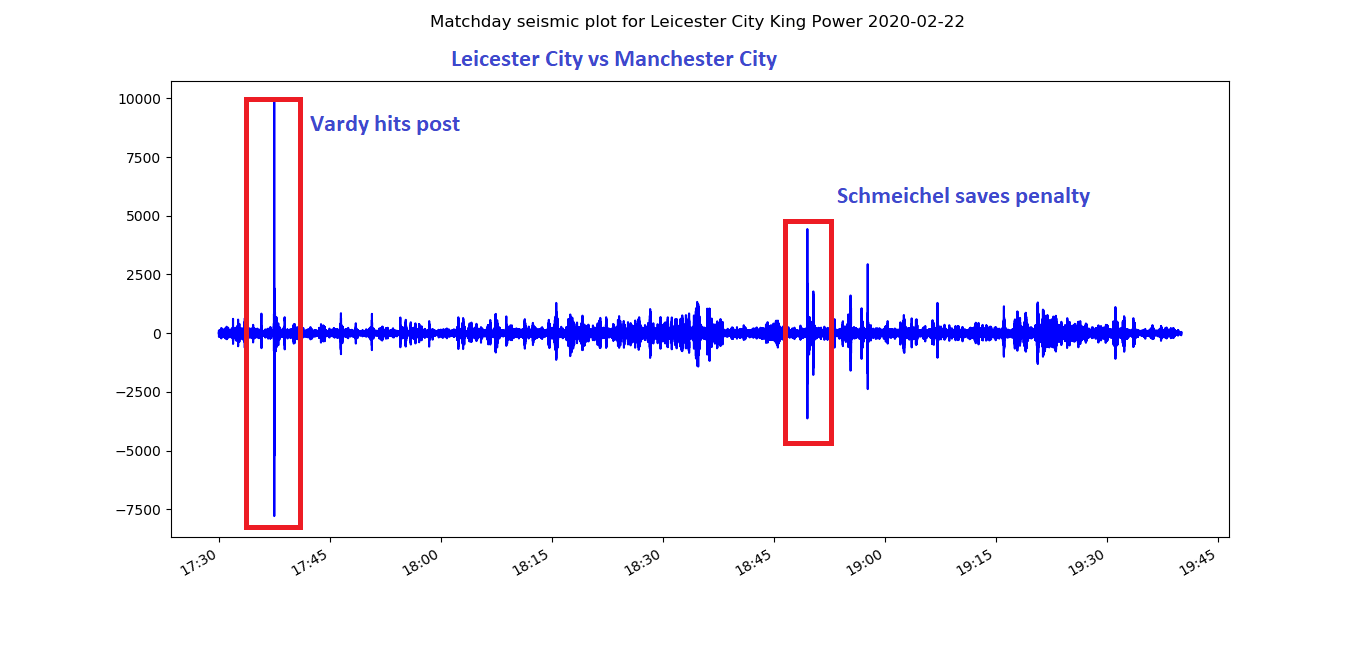Vardyquakes in 2020
Vardyquakes in 2020
Measuring the crowd response to Leicester home goals
Measuring the crowd response to Leicester home goals
Back in the heady days of the 2015-16 season the excitement of the fans was being registered by a team of seismologists from the
University of Leicester and Paul Denton, then of the British Geological Survey. They had installed a seismometer in Hazel Road Primary school just 500m from the King Power stadium and were picking up seismic tremors every time City scored a home goal. They labelled the phenomenon “Vardyquakes” and it was picked by the press and became an international viral news story.
Fast-forward to 2020, and the LCFC education team have installed their own seismometer at the King Power stadium. The new system automatically uploads data to the cloud and allows anyone real-time access to the data using the EqInfo android phone app.
The purpose of such projects is really to try and get local kids interested in science. The idea of being able to record signals using simple equipment in your own school that relates to real-world events that have just happened can bring science alive. The same equipment that records Foxes fans jumping up to celebrate a goal can also detect the seismic signals generated by an earthquake on the other side of the world. Schools in Leicester with seismic stations installed now include Christ the King, Sandfield Close and Avenue Road.
Even when Leicester don’t score at home the seismic plots will still show when the Foxes fans start jumping. School computer science students can create their own seismic plots using simple Python scripts.
Create your own plots using simple Python scripts
Why not use vardyquakes as inspiration for a computer science project. The data from the King Power stadium seismometer is freely available in the cloud and you can access this data and create your own plot with just a few lines of python code. You will need to install a Python library that controls reading the seismic data formats that we use and doing simple plots. See https://docs.obspy.org/tutorial/
for details and examples
What does this tell us?
The measurements show which home goal got the biggest crowd reaction this season. Usually, the seismic signal, measured as a single line, consists of an initial spike when the goal is scored and home fans leap to their feet, followed by a gradual decay as the fans settle down and the game moves on. The bubble plots show the maximum intensity reached.
Unfortunately, because of variables like stadium structure, background noise from traffic etc., crowd sizes and underlying geology, it isn't possible to make meaningful comparisons between the measurements at different stadiums.
Related Projects
Related Projects













